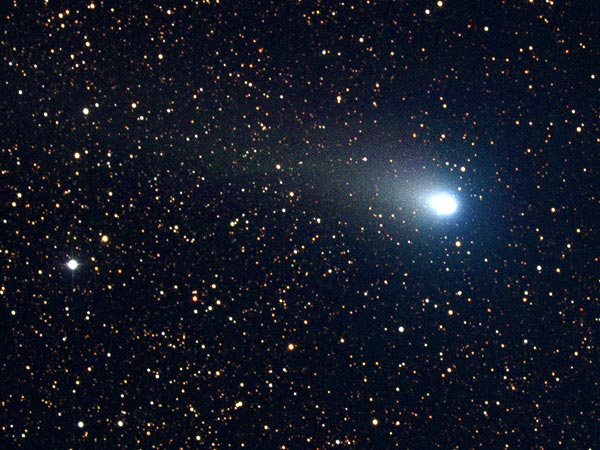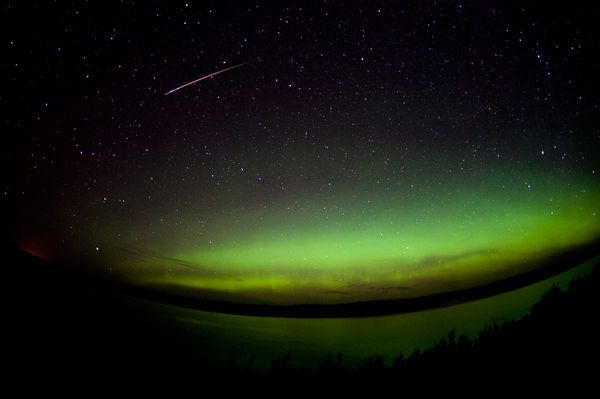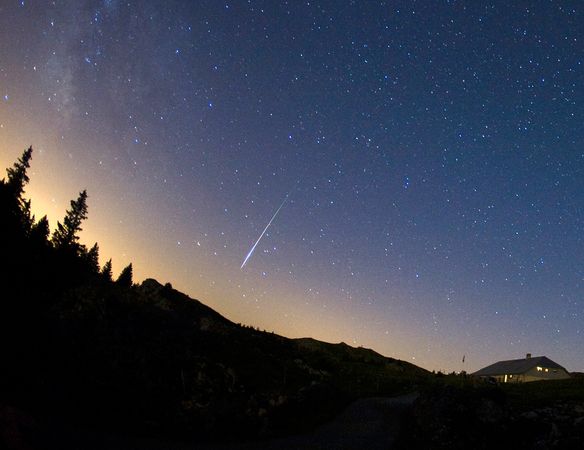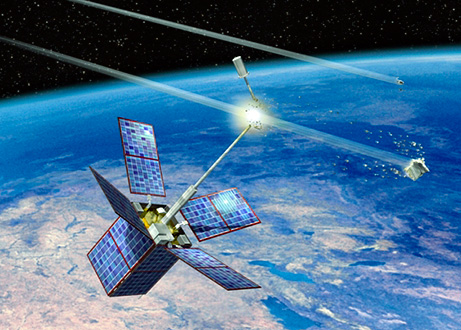
07-10-2011, 08:17 AM
|
 | | | Join Date: Sep 2007 Location: near Govt College of Science Multan Pakistan
Posts: 9,693
Contact Number: Removed Program / Discipline: BSIT Class Roll Number: 07-15 | |
 Meteor Shower This Weekend: Space Station at Risk? Meteor Shower This Weekend: Space Station at Risk?
 The usually humdrum Draconid meteor shower is set to go into overdrive this weekend: Astronomers predict that Saturday's sky show may be a not just a shower but a storm. The usually humdrum Draconid meteor shower is set to go into overdrive this weekend: Astronomers predict that Saturday's sky show may be a not just a shower but a storm.
If the forecasts are correct, the Draconids could see peak rates of up to 600 meteors an hour—an outburst that would far outpace even the crowd-pleasing August Perseids.
("Meteor Shower Dazzles Every August.")
  
The possibility of a meteor storm has NASA and other spacecraft operators keeping keen eyes on how the Draconids might affect the International Space Station (ISS) and other satellites currently in Earth's orbit.
The biggest hazard to satellites during a meteor shower is electrostatic discharge associated with meteor impacts.
When a meteor hits a satellite at high speed, the tiny rock vaporizes into hot, electrically charged gas—or plasma—that can short out circuits and damage onboard electronics, causing the satellite to spin out of control.
("Satellite Collision Creates Dangerous Debris.")

Experts are banking on the idea that the electrostatic risks will be lower with the Draconids, since these meteors travel at less than half the speed of other showers and so shouldn't turn to plasma on impact.
Still, during any meteor shower, "satellites and the ISS are at some risk of collision with particles," said Raminder Singh Samra, staff astronomer at the H.R. MacMillan Space Centre in Vancouver, Canada.
"However, other than avoiding spacewalks, there isn't much the space station can do to avoid such hazards, aside from hoping the damage is minimal."
Earth to Hit a Thicker Band of Meteors?
Like most other meteor showers, the Draconids are named after the constellation from which they appear to radiate—in this case, Draco, the dragon.
At the shower's peak, Draco will be nearly overhead around local midnight throughout the Northern Hemisphere.
The flurry of meteors actually comes from a stream of sand grain-size particles spread along the orbit of the comet 21P/Giacobini-Zinner. When Earth slams into this debris stream, the comet particles disintegrate in our upper atmosphere, creating streaks of light.
Some meteor forecasters calculate that Earth should be entering a particularly thick part of the comet's debris stream this weekend, which would bump up the number of meteors.
"Normally the Draconids are a mediocre meteor shower, with rates of 10 to 20 [meteors] per hour," Samra said.
"However, historically they have been known to peak to hundreds or even thousands of shooting stars per hour, and this may be one of those years."
Meteor Sky Show to Be Invisible?
But even if that's the case, the sky show could be a hit or miss affair, Samra said.
The burst of activity is expected to occur around 3 to 5 p.m. ET on Saturday. That means the peak will be washed out by daylight for sky-watchers in the Western Hemisphere.
People in the Eastern Hemisphere will have the advantage of nightfall during the peak, but they'll have to contend with the glare of the nearly full moon, which will make all but the very brightest meteors invisible.
"This means that all of North America will essentially miss the peak of the shower," Samra said, "but observers in Europe and Asia might have a better chance."
|